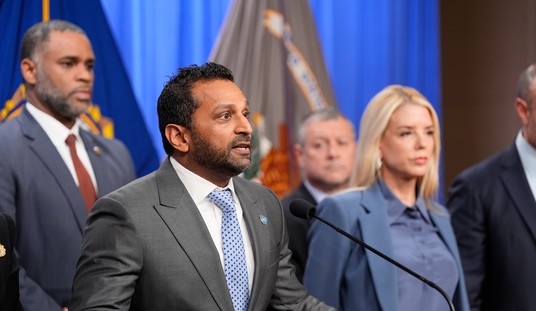Editors' note: This piece is co-authored by Willie Soon and David R. Legates
We’re often asked, "What really causes all these alarms about global warming disasters?"
As scientists and policy analysts who’ve studied our ever-changing climate for a combined 65 years and attribute the changes primarily to natural forces, we’ve wondered that ourselves and also asked: Why is warming always framed as bad news? Why does so much “research” claim a warmer planet “may” lead to more childhood insomnia, more juvenile delinquency, war, juvenile delinquency, violent crime and prostitution, death of the Loch Ness Monster – and even more Mongolian cows dying from cold weather?
We’re not making this up. In fact, this is just the tip of the proverbial melting iceberg of climate scare stories chronicled at Number Watch. Clearly, too much money is being spent on one-sided global warming advocacy cloaked as “research,” not enough on natural causes and adaptation. Despite the best of intentions, too much money can corrupt, or at least skew the science.
As they say, follow the money. Remember Indiana Jones’ immortal words: “Fortune and glory.”

Too many people in government, wealthy foundations and activist groups have decided they know what’s best for us, what kind of energy and economic future we should have, and who should be in charge. They intend to implement those policies – and global warming scare stories are key to achieving that objective. They’re pouring tens of billions of dollars into the effort.
A good example of how research money politicizes science is this May 4 headline: “Carbon dioxide effects on plants increase global warming.” The story enthusiastically reported the results of a science journal paper by Long Cao and Ken Caldeira from the Carnegie Institution. Carbon dioxide is not just making the atmosphere trap more heat, they say. It also enables plants to absorb CO2 more efficiently, so they don’t have to open stomata (pores) in their leaves as much, and they evaporate less water.
Recommended
That should be good news, as it enables plants to survive better under dry conditions, even in desert areas where they couldn’t before. Any botanist or visitor to CO2science.org knows this. Indeed, hundreds of experiments show how growth, water efficiency and drought resistance of crop and wild plants are enhanced by higher levels of atmospheric carbon dioxide. So more CO2 and better plant growth should be celebrated – not serve as another “climate crisis” to further the political goal of ending hydrocarbon use and controlling our factories, jobs, cars, lives and living standards.
But the Carnegie folks turned this good news into bad, ominously saying the reduced evapotranspiration means plants don’t cool down as much, and that supposedly raises global temperatures slightly.
Equally interesting, the researchers based their findings not on actual experiments, but on yet another computer model that allegedly predicts future temperatures. When they tweaked various assumptions about the physiological effects of CO2, global air temperature over land increased 0.7 degrees F (0.4 deg C) above what supposedly would occur just from doubled CO2 levels directly increasing the greenhouse effect. But just six months earlier, the same authors tweaked the same model differently – and got only 0.2F (0.1 deg C) of additional warming. The authors now say this earlier result is “unrealistic.”
However, what guarantee do we have that the new assumptions are “realistic”? Maybe they are but, face it, there’s far less “fortune and glory,” far less headline grabbing, in a mere 0.2 degrees. It’s also far less “realistic” to expect another research grant, if the first one could only come up with 0.2 degrees of crisis. That’s not even 9:00 versus 9:30 on an average summer morning.
Besides fortune and glory, and more research grants and publications in prestigious journals, there’s also the matter of reputation. Dr. Caldeira, besides being a reputable scientist, is also an advisor to billionaire Bill Gates on renewable energy, and in charge of the $4.5 million in geo-engineering research funding that the Gates Foundation has provided over the past 3 years.
How many climate scientists can rub elbows with Bill Gates? Glory indeed. So 0.7 degrees it is.
Of course, this does not mean more robust plant growth can never be harmful. But does it really take five researchers and six funding sources (including the National Environmental Trust, NSF, NASA and NOAA) to model ragweed under doubled CO2 computer scenarios and conclude, “there may be increases in exposure to allergenic pollen under the present scenarios of global warming”?
All this makes us wonder: Why is it a bad thing that more CO2 helps plants tolerate droughts better and revegetate deserts? Should we cut down more forests, to generate even more cooling than the planet has experienced since 2005? Why do “error corrections” always seem to result in more warming than originally predicted, instead of less? And why do taxpayers have to shell out Big Bucks on this stuff?
The United States alone has been spending some $7 billion a year on “climate change research.” That’s a lot of money. But a majority of Americans now say climate change is due to natural forces, not to human CO2 emissions. To alarmists that means more “research” and “education” on the “climate crisis” is clearly needed – but not more on better oversight of questionable research or studying natural causes.
During a March 2009 closed-door meeting, Department of Energy senior advisor Matthew Rogers outlined his “dilemma” over how to comply with his new mandate to quickly spend $36.7 billion in grants and loan guarantees from the 2009 American Recovery and Reinvestment Act (aka, the Stimulus Act) on renewable energy and climate change. Today, with only $300 million of our taxpayer money and children’s inheritance left to spend, poor Matt says his “popularity continues to decline.”
Nearly $2.4 million dollars of that Stimulus loot may be funding the latest research by Penn State University Professor Michael Mann, father of Mann-made global warming, the debunked hockey stick temperature graph and many infamous Climategate e-mails. In one new project where Mike is the principal instigator, over a half-million dollars in grant money generated only “0.53” jobs in Pennsylvania. We must have missed the headline “Stimulus Creates Millionaire.”
We’re not suggesting fraud or corruption by Caldeira or anyone else. But we do find it curious that the vast bulk of the money goes to research that consistently discovers more “global warming crises.” We find several other phenomena equally curious.
* In an era when ExxonMobil posts all its grants on its website, and we have the “most transparent government in history,” government agencies, liberal foundations and activist groups jealously guard information on who’s getting how much money from whom, to finance all this crisis-oriented research.
* Universities are fighting attorney-general investigations, and insisting that any investigations into alleged misconduct must be conducted in-house and behind closed doors. Yet they are happy to give Greenpeace fishing-expedition access to emails and work product by climate crisis skeptics.
* Despite insisting that their research and findings are completely honest and above-board, climate alarmists still refuse to share their data, computer codes and methodologies, or discuss and debate their tax-funded work with scientists who might “try and find something wrong with it.”
If we didn’t know better, we’d think the operative rules were: Never seek logical or alternative answers, if you can blame a phenomenon or problem (like decreasing frog populations) on global warming. Do whatever it takes and fund whatever research is needed, to advance the goals of ending hydrocarbon use, increasing government control and “transforming” society. And always include the terms “global warming” or “climate change” in any grant application.
It may not be corruption. But it sure skews the research, conclusions and policy recommendations.
Willie Soon is an independent scientist at the Harvard-Smithsonian Center for Astrophysics. David Legates is a climatologist at the University of Delaware.

























Join the conversation as a VIP Member